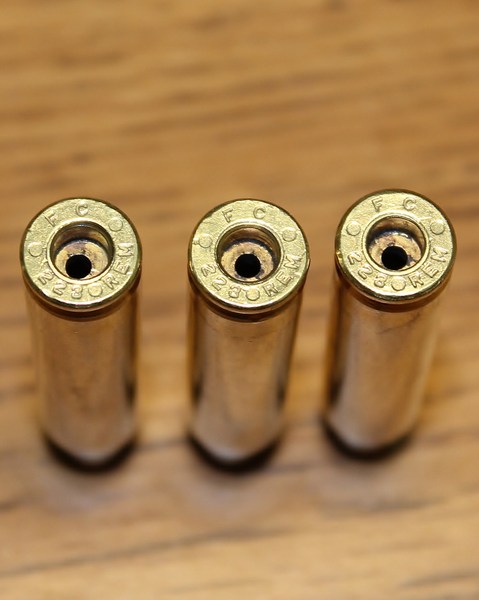Nick , You've helped me out quite a bit when I started loading for pistol and I thank you for that . Now that you are venturing in to my area of knowledge I hope I now will be able to return the favor

I would not get those as my first cases to prep . I have found FC 223 Rem cases to be trimmed short ( some as much as .740 after I've sized them ) FL sizing rifle cases will often cause them to be longer after so the fact they are .010 short of trim to length after resizing tells me they were short to begin with . I also have found that they are either crimped at the mouth or not chamfered/deburred well . If you don't Chamfer/deburr the insides of the neck/mouth after sizing they can shave copper off the jacket of the bullet when seating . I found this out the hard way by assuming the fact I did not need to trim them meant the mouths would not need any other attention . WRONG

I recently processed 1k of mixed 223 & 5.56 brass I had been just tossing in a bucket as the head stamps were not what I normally use . Every FC 223 Rem case had the above issues ( about 250 pieces )
I don't use FC brass very often so I'm not sure how many different head stamps they have . The head stamp I found to have the issues above are in the pic below . Also note that those are the first random 3 I pulled out and one of them has a flash hole off center .

not good
EDIT I just remembered I have some Federal gold metal match in 223 . I took a look at there head stamp and its different . It has FC , year and 223 Rem . So they excluded the little circles/dots and added the year on there premium brass .
As I said these were in a bucket of mixed brass 10+ different head stamps . My plan is to run some test using the mixed brass with a known load that shoots well . I want to see how much mixing brass effects velocity , accuracy and pressure . Those test will be done in the next couple weeks .
I use almost exclusively LC brass that I buy from my local club . Main reason is you know it's only been fired once because you must remove the primer crimp before seating another primer ( this is only needed to be done the first time you reload those cases ) I started out loading for rifles and do a lot of case prep so the primer pocket swaging is not a big deal for me . well and the fact I can get 1k LC pieces for $70 helps and I get to pick the head stamp I want so they're not all mixed years .
Most commercial brass should be fine but thought I'd point out the FC ( federal ) issues I've had . As you know the more you load the more you will find what works for you and you purpose . You may very well find those cases to work just fine . My soon to be done test will likely show they shoot just fine for a inside 100yd load with no noticeable difference from the others .

